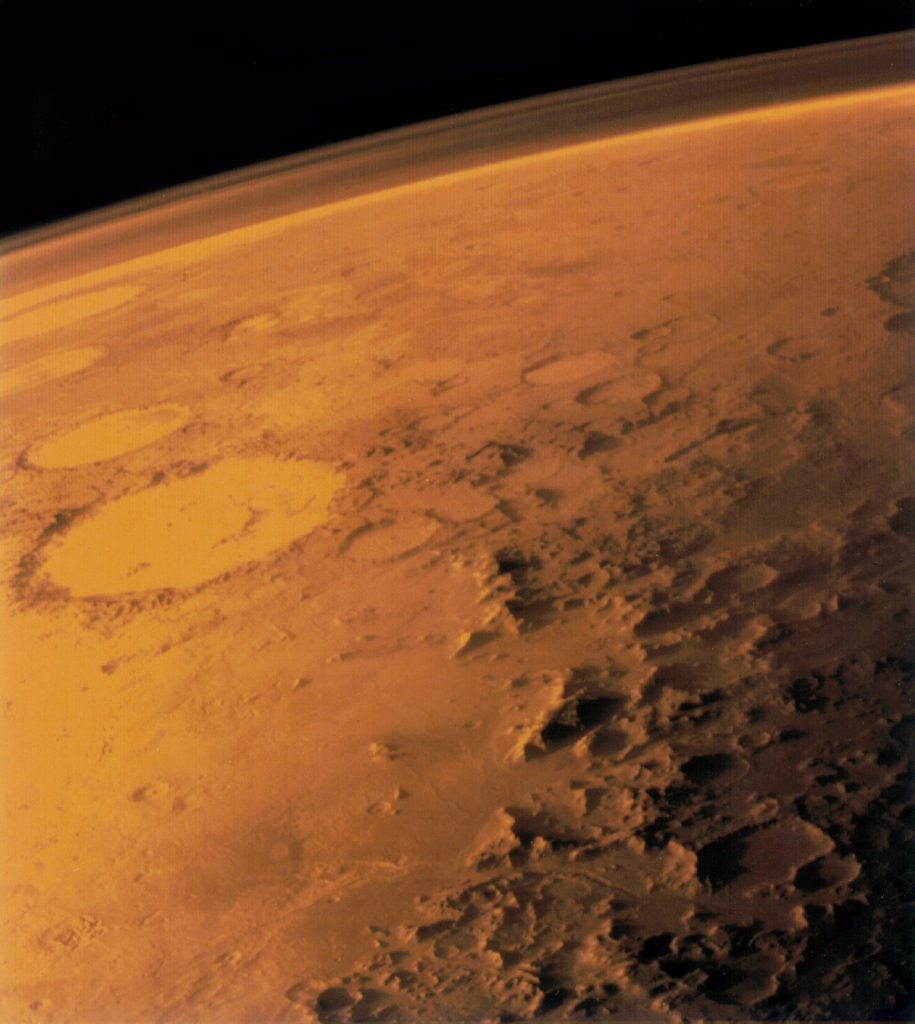Water on Mars – but don’t get your hopes up
First New Horizons and the Pluto flyby, and now this – 2015 has been a big year for astronomy. In late September, NASA confirmed that they had found unambiguous evidence for the presence of liquid water on the red planet, albeit in small amounts. This does, however, add credence to the old theory that Mars was once covered in oceans, and could quite possibly point to life being found on what was formerly thought of as a dry and dead planet.
Water on Mars is not a new concept. For hundreds of years, scientists have pointed to the icy caps on Mars as evidence of water’s presence, later learning that the caps were in fact CO2 ice (although newer studies have shown that water ice exists under such caps). In 1965, Mariner 4 provided evidence of extremely low surface pressure on Mars, which would cause any water on the surface of the planet to simply freeze or boil away. This led scientists to believe that Mars was actually always dead, until later visits to the red planet in the 1970s indicated long dried up river beds – present evidence even suggests that much of Mars was once covered by a large ocean.
For a while now, NASA has gone one step beyond and has been pointing at the possibility of actual liquid water on the red planet, a large part of the fundamental clues that could allude to the existence of Martian life. Pictures from both the Mars Global Surveyor and the Mars Reconnaissance Orbiter (MRO) reveal recurring dark streaks on Water on Mars – but don’t get your hopes up walls on the Martian surface, suggesting water flow. These streaks have been named ‘recurring slope lineae’ (RSL) by mission scientists, and appear to grow in size during the warmer months, consequently shrinking during the colder ones.
Recently, the RSL were examined using a spectrometer – a device that essentially measures the qualities of a specific light – that was present on board the MRO. Infrared light reflected off the dark streaks across the planet in different states of appearance revealed light signatures given off by hydrated salts (more precisely chlorates and perchlorates for any chemistry buffs out there). More importantly, the hydrated salts contained molecular water in liquid form, which actually flows when the surface of Mars is above -23° C as the salts lower the freezing point of water to below 0°C.
Scientists are now currently trying to deduce where the water in these flows comes from. A possibility is that the salts present in the water ‘pull’ water from the atmosphere, where it exists in small amounts as vapour. Another is that frozen water exists just below the surface of Mars, turning to liquid when in contact with the salts. The last possibility considered is that subsurface aquifers (essentially water-bearing gritty rocks) cause the water flows – but this would not explain every example of water flow present.
Of course, the presence of water would lead to the obvious suggestion of life on Mars, but for all of you hoping to see some little green men in future, you’ll be sorely disappointed. Any life present on Mars is likely to be a simple, tiny microorganism, which would be notoriously difficult to find. Unfortunately, we’ll have to wait a few more years for NASA’s Mars 202 rover or the ESA’s ExoMars mission to be in with any chance of finding those microorganisms, as the Curiosity rover is covered in resilient Earth microbes that could possibly contaminate any samples taken, or even Mars itself – which would indeed make for a strange discovery in years to come!

Comments